Reports
Reports are the main feature of Radar360.
Reports can join disparate data sets, analyze decades of history, and calculate answers in a fraction of a second. From the home page, you can:
- Create a new report from scratch
- Select from pre-made system reports created by the Sportradar team
- Select from your previously created reports
- Select from reports shared within your organization
Visit the links below for detailed walkthroughs for a specific league report.
Building a Report
A new report can be started using the + button in the upper right-hand corner, the Start a New Report section in the middle of the page, or the New Stats Report option under the Analyze tab at the top of the screen.
There are essentially three dimensions to a report in Radar360: Filters, Splits and Stats.

Filters
Filters are the context through which data is viewed. All reports will begin with default filters applied, such as: the current season (Season=[current_year]) and the regular season (Season Type = Regular).
For NFL, default League filters are also applied for NFL and AFL to account for all-time reports. The report in the example below could be converted to an all-time report by removing the filter for Season=2023 just above the report view.
Additional filters can be added by selecting the More Filters button.
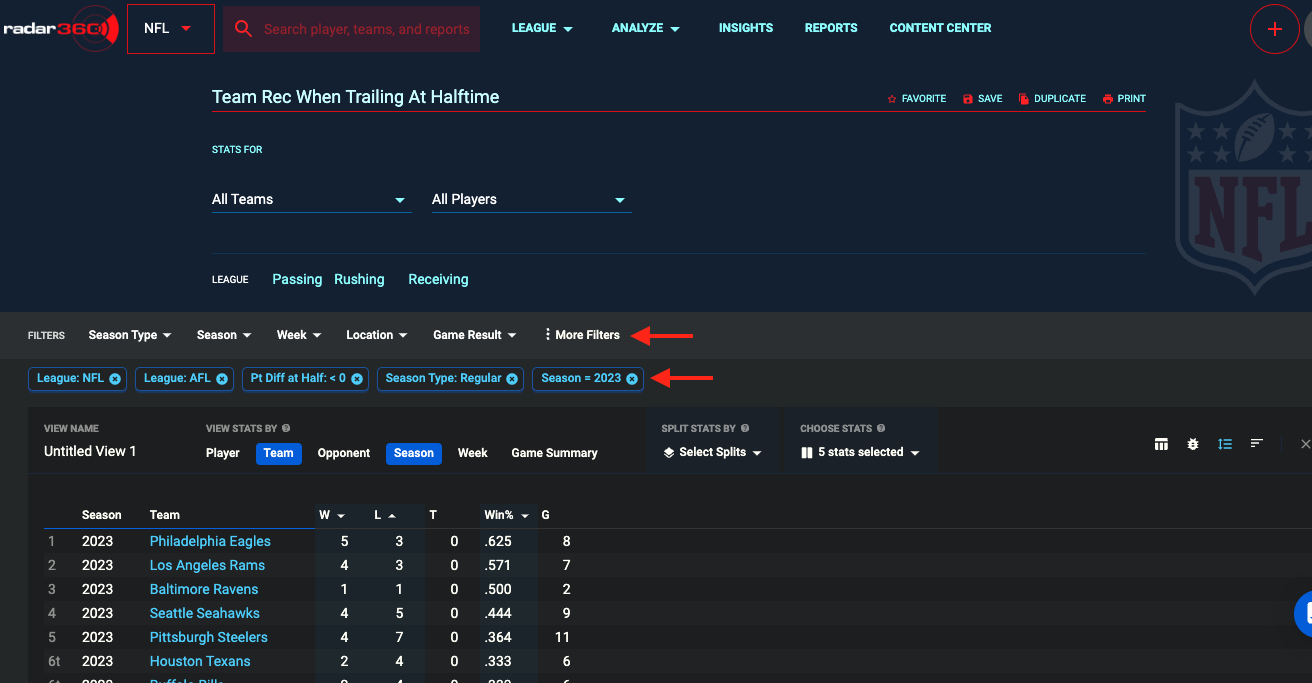
Splits
Splits (also known as Groupings) can be used to break down the data based on a secondary context.
In the below screenshots, click on Player or Select Splits to see passing yards by individual player.
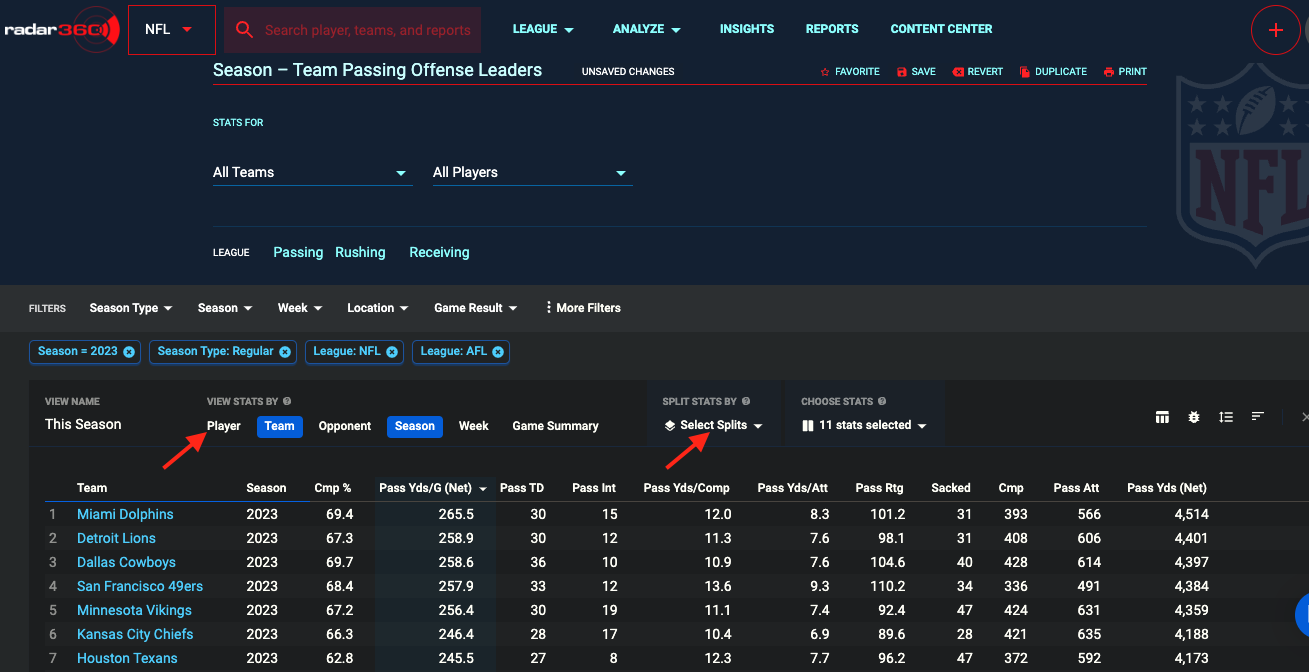
Click on "Player" under "View Stats By" or click the "Select Splits" dropdown
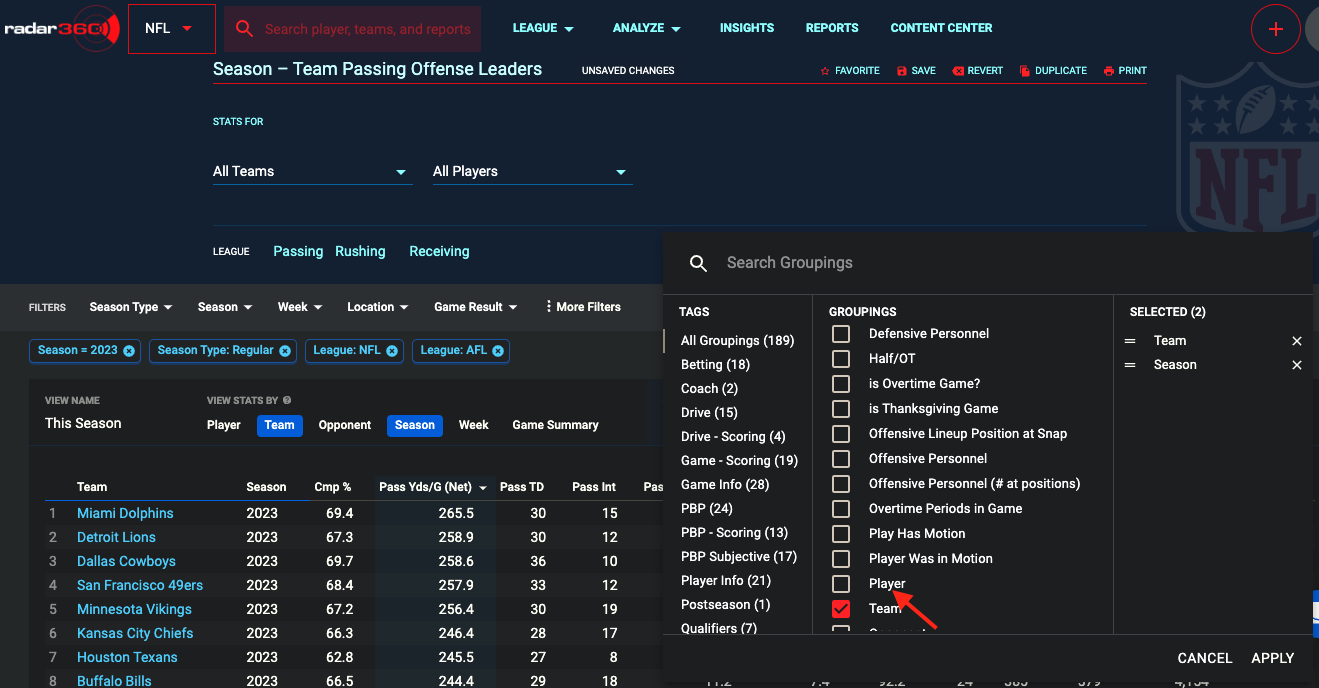
Select "Player" after clicking the "Select Splits" dropdown
Stats
Stats (also known as Measures) are used to select which raw data to display.
Select the Choose Stats menu to browse through our extensive statistical catalog and add statistics to a report.
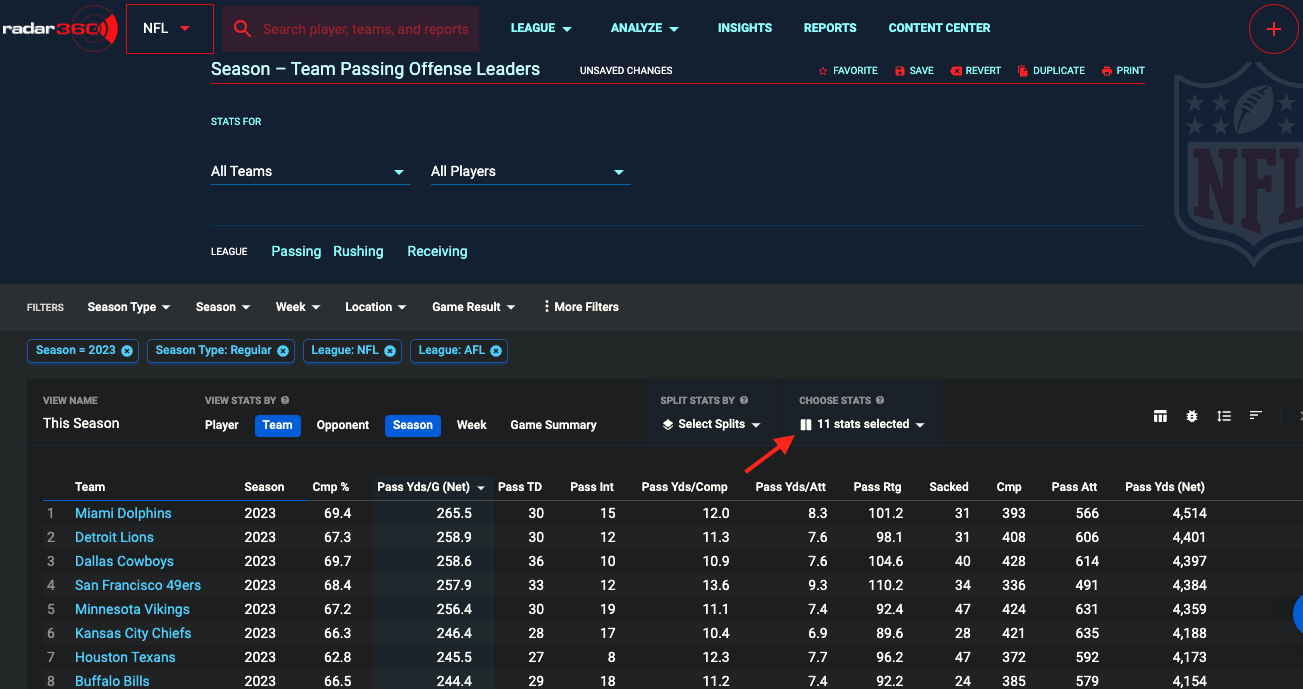
After selecting stats, click the Apply button to add to your report.
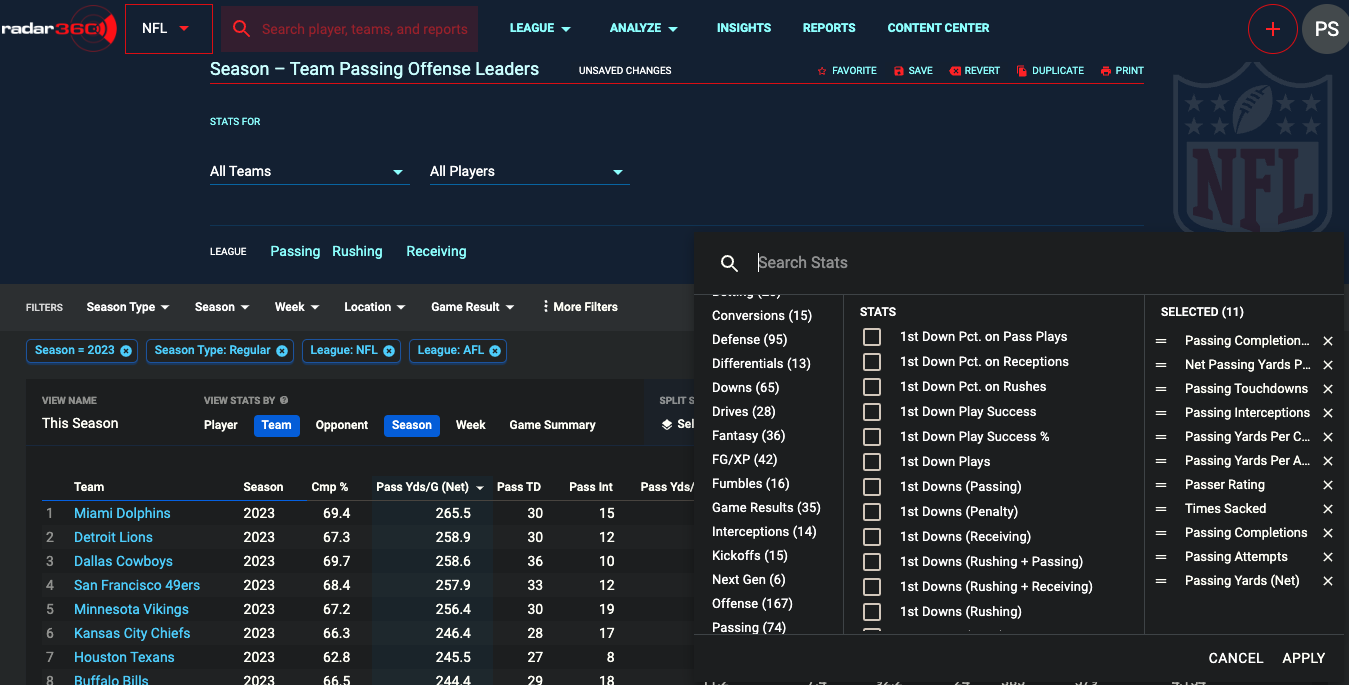
Live Data
Reports can also update in real-time using live data. Data will update every 15 seconds while games are live via this toggle:
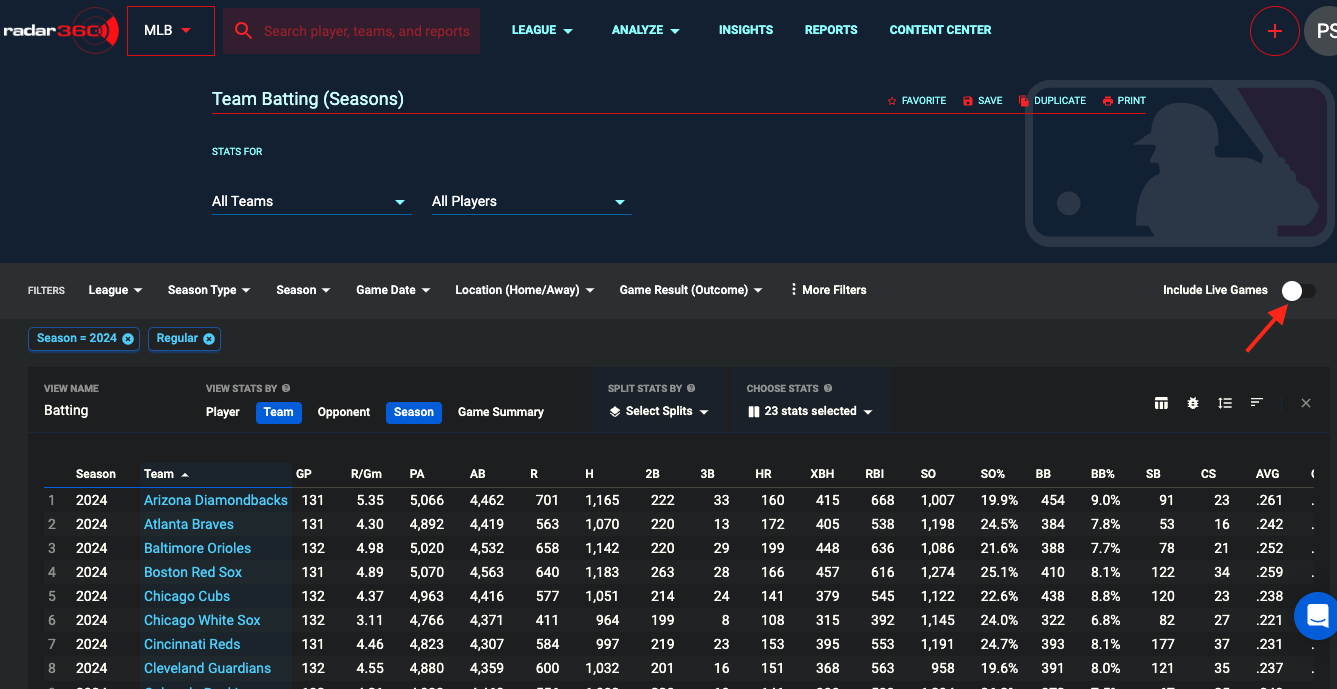
Exporting a Report
Reports can be exported to an Excel sheet if there are any calculations or data manipulations needed beyond the capabilities of the tool. Click Export View to download the file.
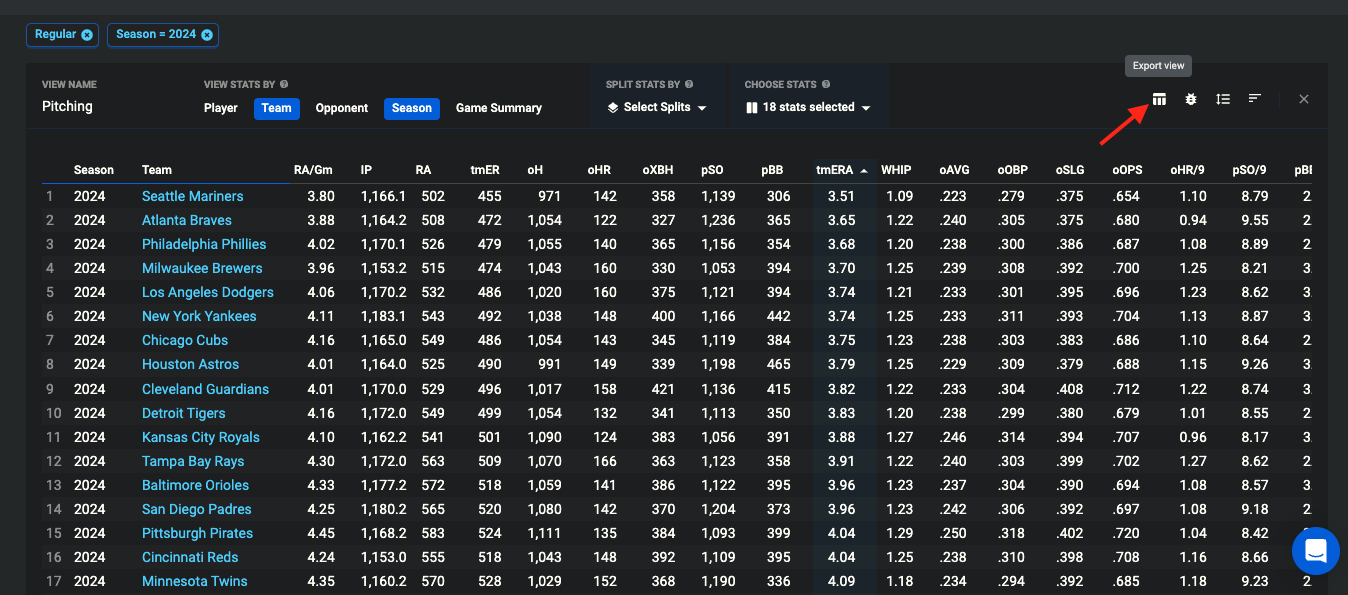
Saving and Sharing Reports
To save a report, provide a title at the top of the screen and click Save. A unique, shareable URL will be created for that report.
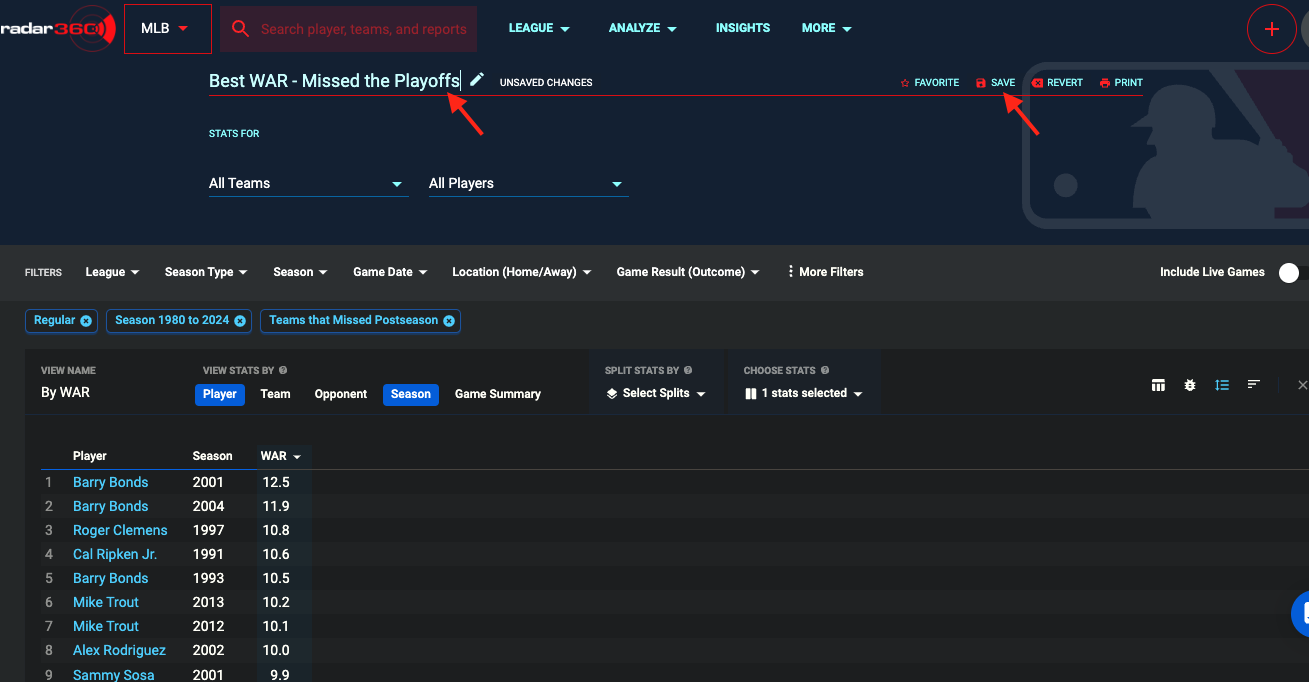
The report will be added to the list of reports on your Radar360 homepage. Your homepage also provides reports shared across your organization.
Search for report names using the field in the top left corner of Radar360.
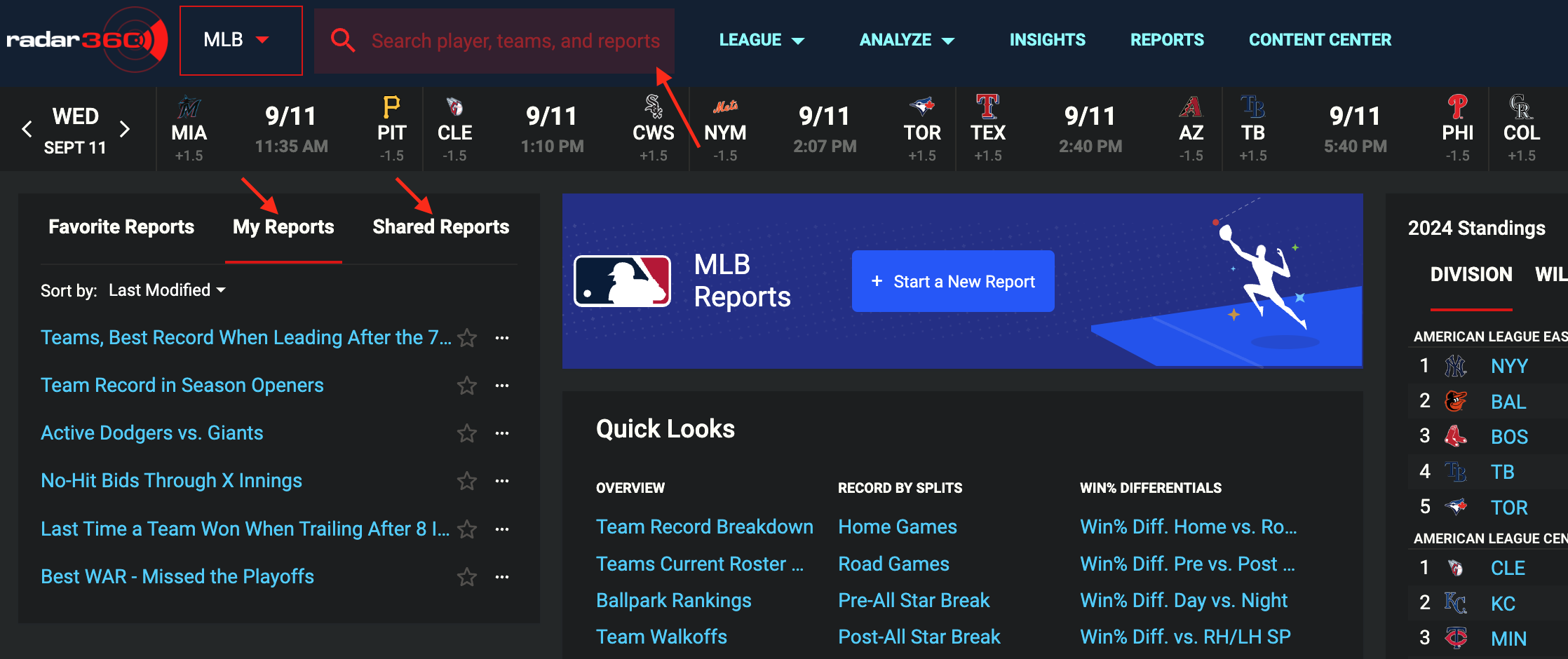
Reverting and Duplicating Saved Reports
Saved Radar360 reports can easily be manipulated and built upon.
Video Tutorial
Text Tutorial
For example, take this saved MLB report for No-Hit Bids Through 7 Innings by the Mets.


To create a new, modified version of this report click on Duplicate in the top bar. This creates a copy of the report to be modified and saved.

From here, modify the report in any way necessary. For instance, change the inning range, the year range, the stats included (under CHOOSE STATS), or the team.
In the below example, we've changed the team to the Boston Red Sox, altered the Inning range to 1 to 8, and added a Game Score statistic for the starting pitcher.
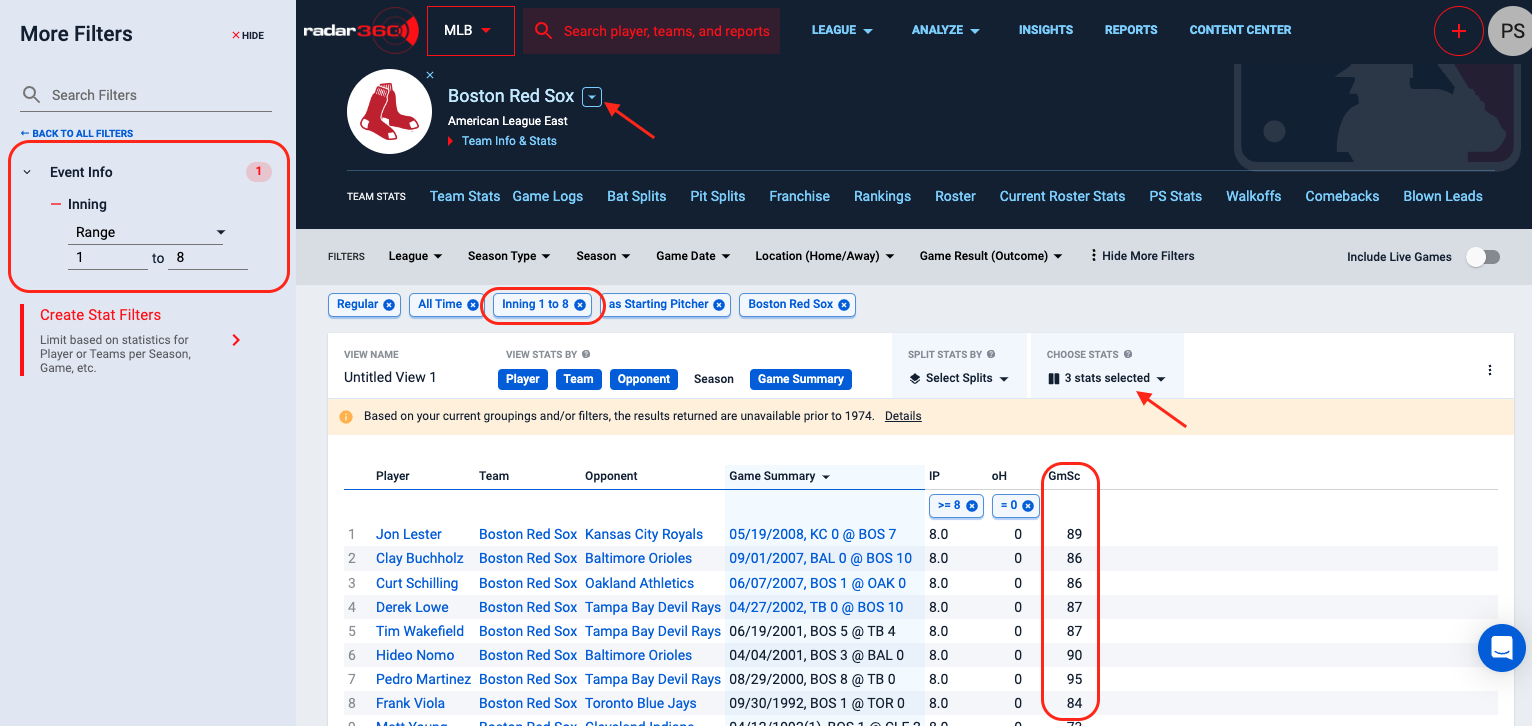
Once the report is adjusted, update the title and click Save to save the new version. Alternatively, revert the report back to its original saved status by clicking the Revert button.

Once saved, the report appears in the My Reports section beside the original report.
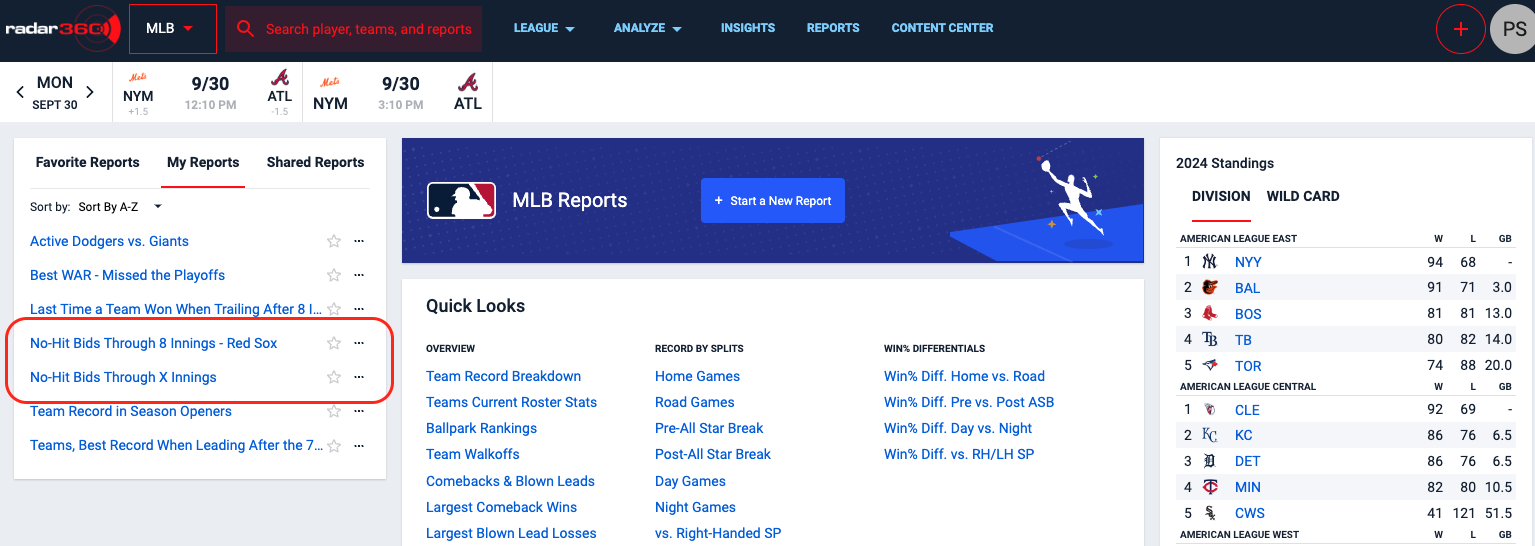
Updated 3 months ago
